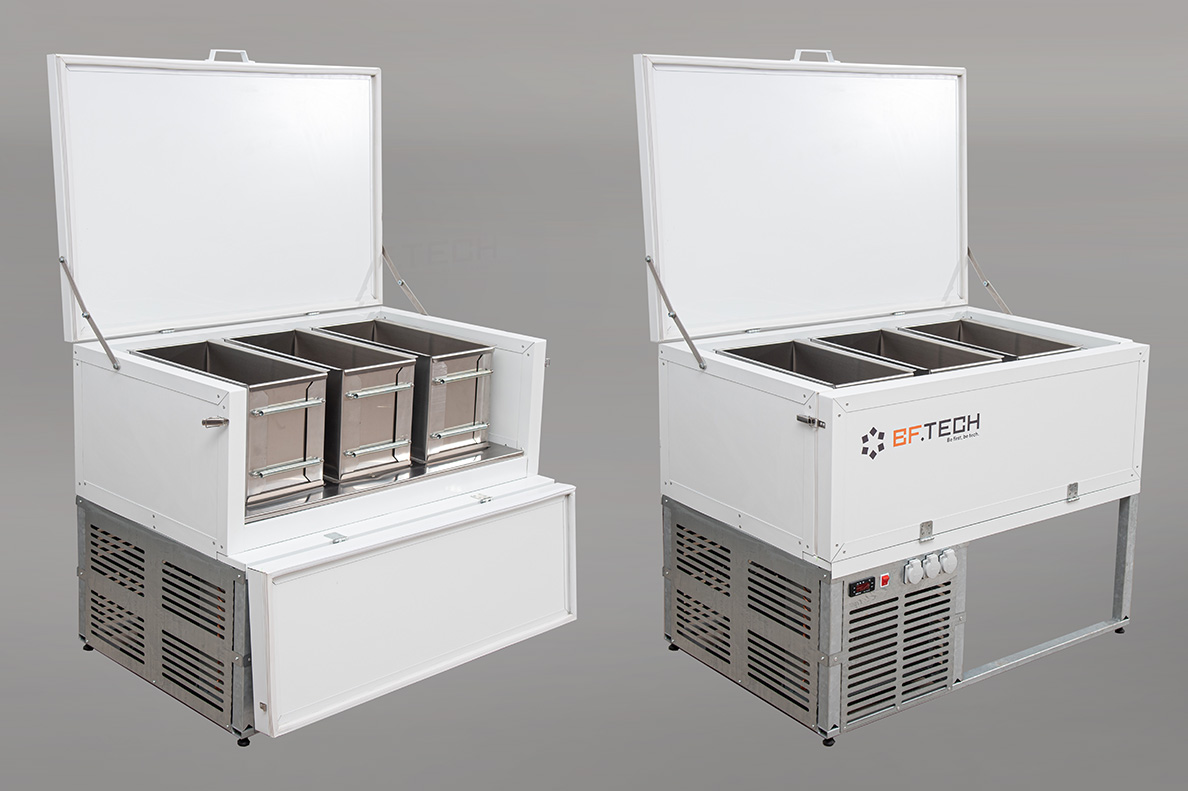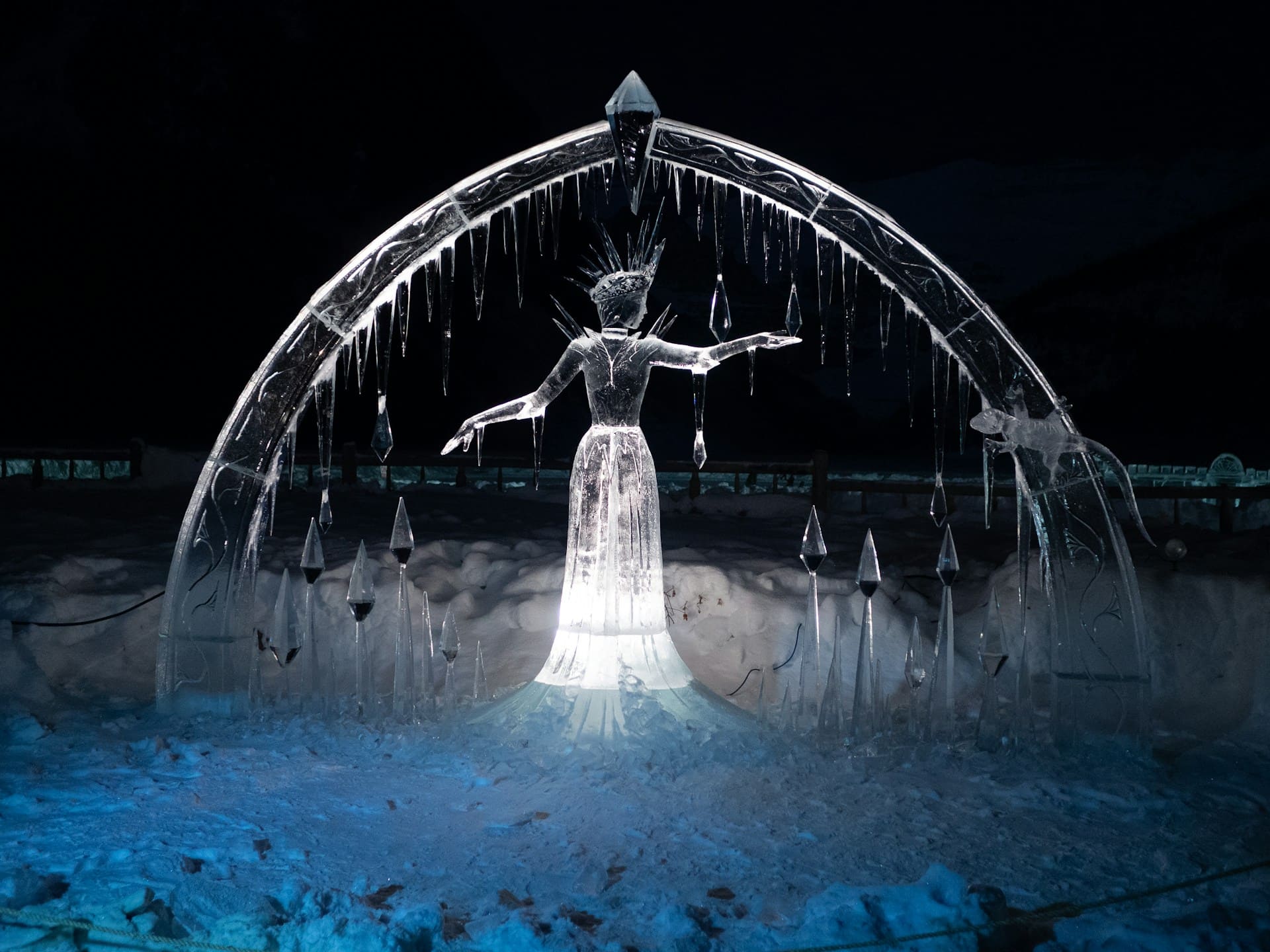Ice Machine Types: Based on the Characteristics
When it comes to ice machine types, it is essential to understand their characteristics. Let’s explore the main criteria, production efficiency, dimensions, size of ice blocks, and energy efficiency to ease the process of choosing the right ice maker to meet your needs.
The main criteria for ice maker types


Production efficiency
Ice machines differ in their production capacity. Some are designed for high-volume production, ideal for commercial usage. At the same time, there are those suitable for smaller-scale applications.
Dimensions
Consider the physical dimensions of the ice machine, ensuring it fits the available space you have. Compact models are ideal for limited spaces, while larger units offer greater ice production capabilities.
Size of ice blocks
Ice machines produce ice in different shapes and sizes. Whether you need small ice cubes, large blocks, or specialty shapes, choose an ice machine that meets your specific requirements.
Energy efficiency
With growing environmental concerns and sustainable development matters, energy efficiency is crucial. Look for ice machines with energy-saving features to minimize electricity consumption and reduce operating costs on the whole.
Ice machine types by production efficiency



Production efficiency plays a crucial role in determining the suitability of a particular machine for different sizes of enterprises. Each ice machine type has its own capacity, making it important for businesses to choose the right machine that aligns with their daily ice needs.
In general, there are two main types of ice machines by their production efficiency:
Modular Ice Machines
They are designed for high-volume production, consisting of separate ice-making and storage units. It allows for continuous ice production and easy expansion. An example of such a machine is BFTech P300. This type has the capacity to generate up to 300 kilograms (661 pounds) of ice per day. It is definitely suitable for large-scale enterprises such as busy restaurants, hotels, banquet halls, and other establishments that have a continuous demand for a substantial amount of ice. Moreover, the P300 Ice Machine offers exceptional performance and reliability, ensuring a steady supply of ice to meet the needs of high-traffic establishments.
Self-Contained Ice Machines
They combine the ice-making and storage components in a single unit. These are best suited for smaller enterprises or areas with limited space. When it comes to the BFTech solution, it is BFTech P150 Ice Machine. The combination of both ice-making and storage capabilities in a single unit makes it a convenient option for smaller to medium-sized enterprises. The P150 Ice Machine has a daily ice generation capacity of 150 kilograms (330 pounds). This machine is suitable for establishments such as cafes, small restaurants, offices, and convenience stores, where there is a moderate demand for ice.
Apart from the main types of ice-making machines, BFTech offers a perfect solution for smaller enterprises with really limited space, which is the BFTech P30 Ice Machine. This super compact solution is an under-counter ice machine designed to fit beneath countertops, making it ideal for establishments with space constraints. Of course, it has a lower production capacity, generating up to 30 kilograms (66 pounds) of ice daily. Still, it is perfectly suitable for bars, small cafes, coffee-to-go places, and compact kitchens where the ice demand is relatively low.
Each of these ice maker types offers reliable performance and efficient ice production, catering to the specific needs of different sizes of enterprises.
Types of ice machines by dimensions



Another crucial consideration is ice maker dimensions. In various settings, space availability may be limited, requiring careful selection based on the available area for placement. There are different types of ice machines that come in various form factors to fit diverse spatial requirements and also provide options for businesses with various space constraints.
By dimensions, ice makers can be:
- countertop
- under-counter
For instance, our company offers a range of ice machine options suitable for different dimensions.
- The BFTECH P300 ice maker provides a larger production capacity and is designed to fit into medium to large-sized spaces. Its dimensions are specifically tailored to accommodate higher ice production demands without compromising performance and efficiency.
- The BFTECH P150 ice maker is a more compact option suitable for smaller spaces. This one is an ideal choice for businesses that have a limited area available but still require a significant ice production capacity.
- The BFTECH P30 ice maker is a rather space-saving design solution. This model is specifically created for businesses with very limited space (e.g., small cafes or office kitchens). Despite its smaller dimensions, it still delivers a reliable ice production capacity to meet the demands of companies that opt for it.
No matter if it’s a large-scale operation or a compact workspace, there are options available for all of them. It is important to ensure businesses can find an ice machine that fits their available space and doesn’t affect ice production capacity.
Size of ice blocks produced by machine

The market of ice making also suggests classification by the size of ice blocks produced by machines. In this matter, types of ice makers are generally divided into two main categories.
- Full-cube ice machines (producing solid and large-sized cubes)
- Half-cube ice machines (producing smaller and crescent-shaped ice cubes)
This factor is important to consider when choosing ice block makers. Depending on the type of business, there may be various requirements for ice block sizes. It is also worth mentioning that modern ice machines provide an opportunity to make ice blocks of different sizes.
For example, the BFTECH P300 ice maker is designed to produce ice blocks in two different sizes. On the other hand, the BFTECH P150 and P30 ice makers produce smaller-sized ice blocks.
It’s crucial for businesses to assess their particular needs for ice block sizes and select an ice machine accordingly. By choosing a machine that can produce the desired size, businesses can ensure that their ice supply meets their requirements, whether it’s for cooling, food preservation, or beverage presentation.
Types of energy-efficient ice machines

We are going to consider one more classification of ice maker types which is by energy efficiency. This factor is more and more taken into consideration by different businesses. It is because most of them are aiming to reduce their environmental impact and operating costs. Regarding this, there are two main types of such machines:
- Energy Star certified (meet stringent energy efficiency standards and consume less energy, reducing environmental impact and saving on utility bills).
- Air-Cooled (use ambient air to cool the refrigeration system).
Nevertheless, the best and most precise way to estimate energy efficiency in ice machines is to calculate the amount of ice produced per cycle in relation to energy consumption. The general rule says the more ice a machine can produce in a single cycle while consuming less energy, the more energy efficient it is. Sounds like an easy formula, don’t you think?
For example, comparing the BFTECH P300 ice maker, we should state it can produce a larger quantity of ice per cycle compared to the P150 and P30 models. On the whole, it can produce up to 300 kilograms of ice per 24-hour cycle, while P150 – up to 150 kilograms and P30 – up to 30 kilograms per 24 hours. As a result, such machines maximize the ice output while minimizing energy consumption. This way, businesses can significantly optimize energy usage.
Conclusion
Choosing the right types of ice makers is crucial for meeting your specific needs and expectations. Consider the criteria of production efficiency, dimensions, ice block size, and energy efficiency to make an informed decision. When you take a big picture of the characteristics of different ice machine types, you can ensure a reliable supply of ice while optimizing the general business flow.
FAQ
What are the 3 major components of an ice machine?
The three major components of an ice machine are the refrigeration system, ice-making unit, and storage bin.
What is the difference between an ice maker and an ice machine?
An ice maker typically refers to a standalone unit that produces ice, while an ice machine encompasses both the ice-making unit and storage bin in a single device.
Do ice makers waste a lot of water?
Ice makers do require a water source to produce ice, but modern models are designed to be more water-efficient. While it's true that ice makers consume water during the ice-making process, technological advancements have led to more efficient water usage. Choosing the right types of ice makers is crucial for meeting your specific needs and expectations. Consider the criteria of production efficiency, dimensions, ice block size, and energy efficiency to make an informed decision. When you take a big picture of the characteristics of different ice machine types, you can ensure a reliable supply of ice while optimizing the general business flow.








